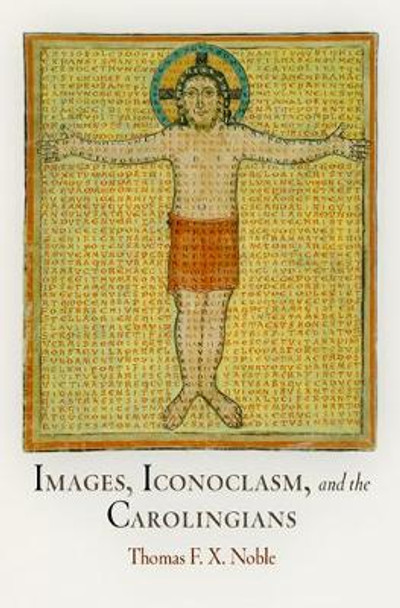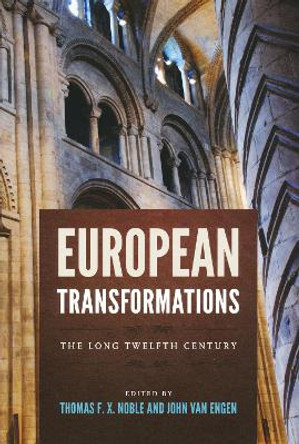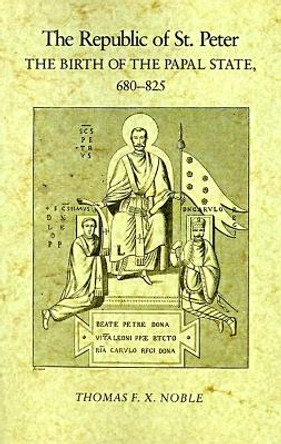Description
In the year 726 C.E., the Byzantine emperor Leo III issued an edict declaring images to be idols, forbidden by Exodus, and ordering all such images in churches to be destroyed. Thus commenced the first wave of Byzantine iconoclasm, which ran its violent course until 787, when the underlying issues were temporarily resolved at the Second Council of Nicaea. In 815, a second great wave of iconoclasm was set off, only to end in 842 when the icons were restored to the churches of the East and the iconoclasts excommunicated.
The iconoclast controversies have long been understood as marking major fissures between the Western and Eastern churches. Thomas F. X. Noble reveals that the lines of division were not so clear. It is traditionally maintained that the Carolingians in the 790s did not understand the basic issues involved in the Byzantine dispute. Noble contends that there was, in fact, a significant Carolingian controversy about visual art and, if its ties to Byzantine iconoclasm were tenuous, they were also complex and deeply rooted in central concerns of the Carolingian court. Furthermore, he asserts that the Carolingians made distinctive and original contributions to the whole debate over religious art.
Images, Iconoclasm, and the Carolingians is the first book to provide a comprehensive study of the Western response to Byzantine iconoclasm. By comparing art-texts with laws, letters, poems, and other sources, Noble reveals the power and magnitude of the key discourses of the Carolingian world during its most dynamic and creative decades.
In eighth- and ninth-century Byzantium there arose a heated controversy over religious art, known as the "Iconoclastic Controversy." Analyzing hundreds of pages of art-texts, laws, letters, and poems, this book examines the wider context of the debate by providing the first comprehensive study of the Western response to Byzantine iconoclasm.
About the Author
Thomas F. X. Noble is Professor of History at the University of Notre Dame. He is author of several books, including The Republic of St. Peter: The Birth of the Papal State, 680-825, also available from the University of Pennsylvania Press.
Reviews
"[An] immensely scholarly and interesting book on the Carolingian response to the drama of iconoclasm in Byzantium." * TLS *
"A magisterial reexamination of a period in which long-lived ideas about the power and limitations of Christian images were first articulated in the medieval West. . . . The book skillfully explores Carolingian discourses about images in relation to Byzantine and papal positions in the eighth and ninth centuries." * Journal of Church History *
"Images, Iconoclasm, and the Carolingians presents a rich detailed history of the written debate over religious imagery in the early Middle Ages, with a particular focus on the West, while deemphasizing the violence, destruction, and change so often included by historians in discussions of iconoclasm." * Journal of Religion *
"This learned, incisive and readable book has made an important contribution to the study of early medieval art, and more particularly of a whole religious culture." * Early Medieval Europe *
"A deeply impressive, powerfully argued, and extraordinarily interesting book. Noble establishes the centrality of the Carolingian period and its writers to the development of ideas about sacred art. He offers a new interpretation of the understanding of images in both the western and eastern empires in the early Middle Ages." * Rosamond McKitterick, University of Cambridge *
"Images, Iconoclasm, and the Carolingians is remarkably scholarly, surveying secondary literature in both Byzantine East and Latin West, and in many different disciplines, including theology and art history as well as history. It is a splendid book. It will be a standard reference for many years to come." * Lawrence Nees, University of Delaware *
Awards
Winner of Awarded the 2011 Otto Grundler Prize by the Medieval Institute 2021.
Book Information
ISBN 9780812222562
Author Thomas F. X. Noble
Format Paperback
Page Count 496
Imprint University of Pennsylvania Press
Publisher University of Pennsylvania Press








